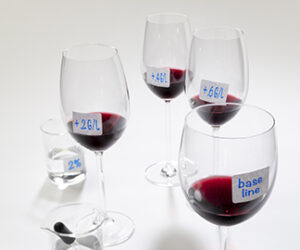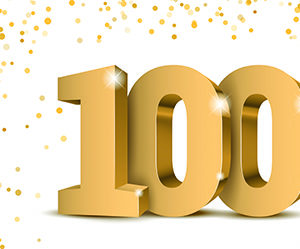Updated June 26, 2025
Wine Industry Outlook Update
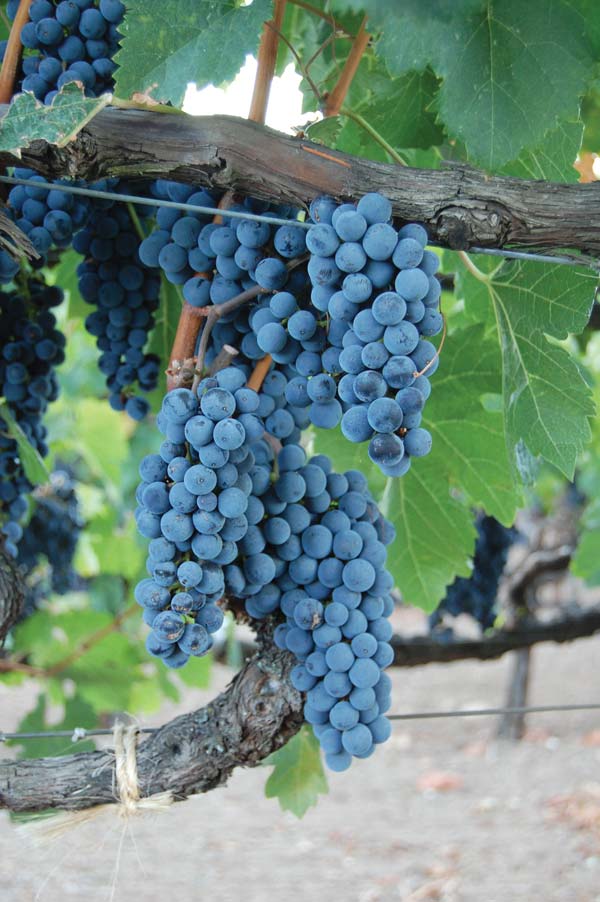
Coming off continued decreases in sales since the worldwide pandemic in 2020, there may be a light at the end of the tunnel and reason for optimism for North American wineries, according to the 2025 BMO Wine Market Report. Based on surveys of more than 750 wineries in the U.S. and Canada taken in early 2025, sales per volume decreased by 4% in 2024, though the value of sales increased due to wine consumers leaning toward more expensive wines.
Total volume of wine sold in the U.S. prior to the COVID pandemic in 2019 was 410 million cases. This high point has fallen to 362 million cases in 2024. Though the 4% decrease last year was less than half of the 9% decrease seen in 2023, which the report speculates may be a signal of market stabilization. The better news is that the value of the U.S. wine market grew 4% to $109 billion in 2024. Nearly 40% of responding U.S. wineries and more than 40% of Canadian wineries increased sales in 2024. These gains are largely due to a 12% increase for wines priced between $20–$50 a bottle, and a median sales increase of 10% for wines priced above $50 a bottle.
Direct-to-consumer sales and online sales are areas wineries have seen growth, with nearly 60% of all wineries anticipating continued increases in direct-to-consumer sales this year. This trend has led over half of the wineries surveyed to report plans of investing more in tasting rooms and wine clubs in the coming years.
Tariffs and decreased drinking habits by Gen Z compared to their parents are still hampering the wine (and alcohol in general) markets. Still, wineries remain optimistic, as more than 70% in both the U.S. and Canada expect to see sales grow by more than 5% over the next five years.
Read the full report from the BMO Wine & Spirits Group at: www2.bmocm.com/2025-wine-report
California Grape Harvest Takes Big Hit in 2024

The 2024 California Grape Crush Report released earlier this year shows the lowest amount of grapes harvested in recent memory — down nearly a quarter of what was made into wine the previous year.
In total, just under 3 billion tons of wine grapes were crushed in the state — down 24.1% from 2023. The amount of red vs. white varieties crushed were similar — with reds making up 1,466,346 tons (down 25.7% from 2023) and white grapes making up 1,417,993 tons (down 17.2%). These totals mark the state’s lowest grape crush in 20 years.
Chardonnay maintained its place as California’s most popular grape with total tonnage crushed making up 17.8% of the state’s total. Cabernet Sauvignon accounted for the second largest percentage at 15.4%. Other significant grape populations included: French Colombard (9%), Pinot Noir (7.4%), Zinfandel (6.8%), Pinot Gris (6.4%), Rubired (5.1%), Sauvignon Blanc (4.7%), Muscat of Alexandria (4.5%), and Merlot (4.4%).
The decrease in production didn’t have a significant impact on the price of grapes, as the average price per ton of all wine grape varieties was just over $1,000 (a 2.9% decrease). The average price of red wine grapes fell $10 a ton to $1,336, while the cost of white wine grapes fell $27 per ton to $707. This is the first time the price of wine grapes has decreased since 2020. The price varies significantly by region — the cost per ton of Napa County grapes was down just 1% but still averaged $6,939 per ton.
It isn’t just wine grapes that saw significant harvest reductions. Raisin varieties totaled 23,630 tons — less than half of what the state saw in 2023. Even more significant, table grape varieties totaled 53,463 tons harvested, down two-thirds from 2023.
The full 2024 California Grape Crush Report with detailed crush numbers and prices by variety can be found at: www.nass.usda.gov/Statistics_by_State/California/Publications/Specialty_and_Other_Releases/Grapes/Crush/Final/2024/Grape_Crush_2024_Final.pdf
A Fix for Smoke Taint?
Winemakers have become very familiar with the risks of smoke-tainted grapes caused by wildfires in recent years. Entire vintages in some areas have been lost due to smoky aromas and flavors on grapes that transfer to the resulting wine. However, a breakthrough has been reported by Australian researchers who have demonstrated the ability to lessen the perceptions of smoke taint in a wine by targeting and removing the volatile compounds absorbed by grapes during wildfires.

Previous research has looked to remove these volatile compounds with a variety of absorbents; however, the approach has largely proved unsuccessful because, in addition to removing the targeted compounds, they also removed much of the desirable compounds that contribute to a wine’s color, aroma, and flavor. This led a team of researchers from the University of Adelaide to look to selectively remove the unwanted compounds through molecularly imprinted polymers (MIPs) — which are synthetic materials that bind to targeted compounds. These MIPs were added in different ways — both during and after fermentation, contained in muslin bags or floating freely — and experiments were also done to regenerate the MIPs by rinsing them off and reusing. Using both chemical analysis and tasting panels, the trials proved beneficial.
In a paper published by the American Chemical Society, the researchers concluded the most effective use of the MIPs was with additions post-fermentation and that regenerating the MIPs enhanced removal of smoke volatile compounds. There was still some removal of desirable compounds, though the overall impression was that the method does successfully reduce the perception of smoke taint and increase palatability of wine made from tainted grapes. Read more at: www.pubs.acs.org/doi/10.1021/acs.jafc.4c03912
Historic Wine News
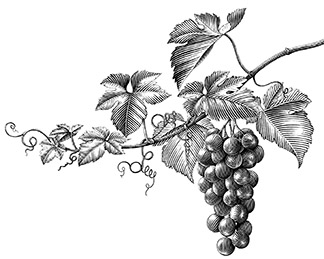
Scientists have recently uncovered some pieces of wine-related history that continue to better our understanding of ancient wine and grapes. First up — researchers recently concluded liquid preserved in a Roman tomb in Carmona, Spain, is in fact the world’s oldest wine from a vintage dating some 2,000 years back. Inside the tomb discovered in 2019 were a male’s skeletal remains immersed in a glass urn with liquid. The liquid had been preserved since the first century AD and taken on a reddish hue. Scientists at the University of Cordoba identified the liquid contents to be white wine, making it about 400 years older than the previous record-holder of oldest wine found in Speyer, Germany, in 1967. To determine the liquid was wine, the researchers ran a series of chemical analyses. The key to determining the substance hinged on polyphenols, biomarkers present in all wines. The results were published in the Journal of Archaeological Science: Reports. Learn more at: www.uco.es/investigacion/ucci/es/noticias-ingles/item/4717-the-world-s-oldest-wine-discovered
Though this isn’t the only history in the wine world that was recently published. The next tidbit dates back much, much longer. A team of researchers recently discovered fossilized grape seeds that range from 60 to 19 million years old in Colombia, Panama, and Peru. These are the oldest examples of grapes in the Western Hemisphere, and just a few million years younger than the earliest known grape seed fossils found in India after 66 million years. The older grapes are believed to be from around the time an asteroid hit the Earth, triggering a massive extinction of dinosaurs. The extinction of dinosaurs, scientists hypothesize, contributed to the spread of grapes around the world and there is now a better understanding of the possible time frame it took grapes to spread worldwide. Because soft tissues like fruits are rarely preserved as fossils, scientists often learn about fruits through their seeds, which more often fossilize. Learn more about the discovery at: www.fieldmuseum.org/about/press/sixty-million-year-old-grape-seeds-reveal-how-the-death-of-the-dinosaurs
Vineyard Microflora Impacted by Climate; May Lead to Changing Terroir
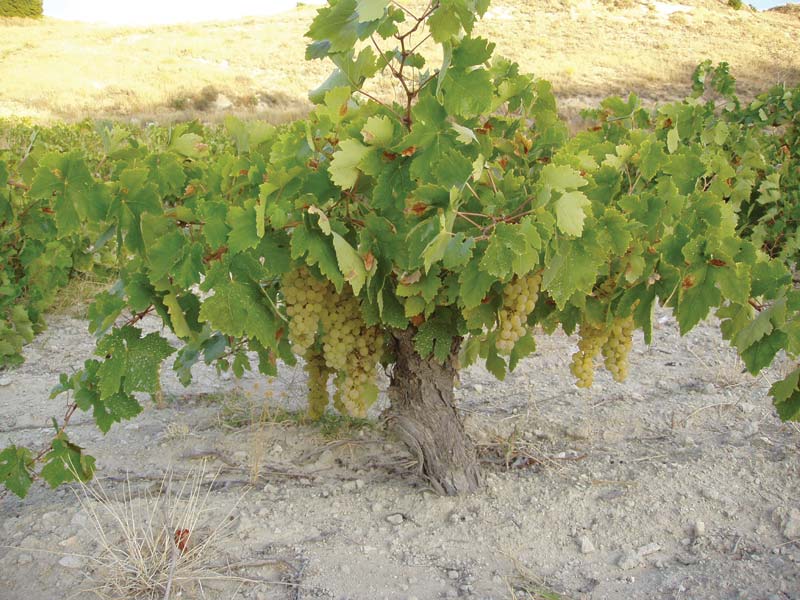
Like all agricultural products, weather plays a huge role in the quality and quantity of winegrapes grown any given year. With that in mind, the first thought about how climate change may impact the future of wine goes straight to the vines themselves. However, a new study shows vine health, grape sugar levels, and phenolic ripeness aren’t the only things the wine industry needs to worry about as extreme or shifting weather conditions present themselves. The microflora of vineyards will also change along with the weather. This means the terroir of wine regions across the world known for wild or spontaneous fermentations will likely change along with the weather.
A group of researchers analyzed the microbial composition across two vintages at a New Zealand winery (2018 and 2021) using a “metabarcoding approach” to assess the possible impact of climatic variation on microbial community composition in organic winemaking. Microbial dynamics were monitored over four fermentation time points and correlated with contemporaneous climate data. The results showed a significant variation in both the bacteria, fungi, and yeast species present between the two vintages. Temperature, humidity, and rainfall are believed to be the leading factors causing this difference. Much more still needs to be learned, but as the climate changes it’s reasonable to believe the organisms present in vineyards that impact the resulting wines’ character will change along with it. Of course, winemakers who rely on cultured yeast for fermentation will not feel the same impact from a changing microflora in a vineyard. Learn more about this study published earlier this year at https://journals.plos.org/plosone/article?id=10.1371/journal.pone.0296859
California Seeing a Surplus of Grapes
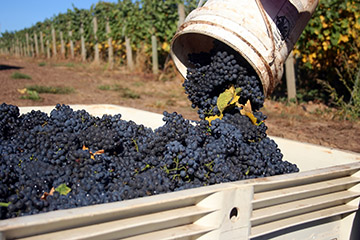
The California Department of Food and Agriculture Preliminary Grape Crush Report was released in February. The report paints a picture of surplus as it details the tons crushed and prices of wine grapes sold during the 2023 harvest. A total of 3.6 million tons of grapes were crushed in California, according to the report, with Chardonnay overtaking Cabernet Sauvignon as the state’s most popular wine grape. A number of acres of grapes that went unharvested would have made the total tons crushed even larger had it not been for disease and a lack of demand forcing some growers to leave grapes on the vines. “Despite the size of the overall crop, most wineries found themselves with an excess supply amid challenging conditions in consumer sales,” the report states.
Just over 650,000 tons of Chardonnay grapes were crushed in 2023 — up 25% from 2022. The total narrowly topped Cabernet Sauvignon by just 5,000 tons, which was also up 15% from 2022. The next leading grapes were Zinfandel (288,000), Pinot Noir (286,000), and Pinot Grigio (234,000).
By region, the North Coast saw the largest increase in tons crushed, up 28%, while the Southern Interior — which is still the largest wine-producing region — actually saw a 4% decrease.
Read the preliminary report at www.nass.usda.gov/Statistics_by_State/California/Publications/Specialty_and_Other_Releases/Grapes/Crush/Reports/index.php
Red Wine Headaches — Finally Some Answers?
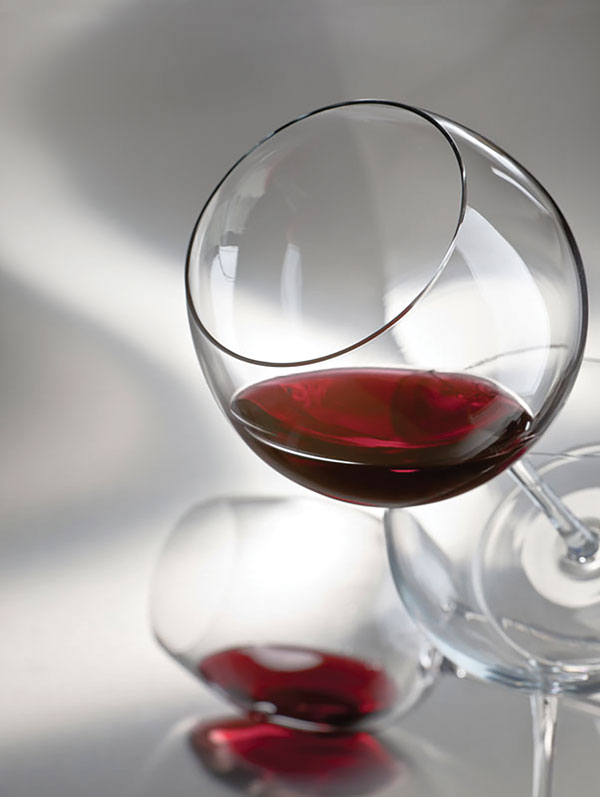
Most folks in the wine community have heard of a friend, colleague, family member, or acquaintance complaining about a searing headache after drinking red wine, even after as little as a half glass. Many in society like to blame sulfites as the cause. But this myth was disproven many moons ago. Histamines were the next compound to be singled out . . . after all, they do cause allergic reactions. But a new suspect has risen to the top of the list . . . an antioxidant known as quercetin.
In a new study put out by a group of scientists at UC-Davis, they surmise that quercetin, a flavanol compound, in the state found in red wine can inhibit a key enzyme that breaks down alcohol. This minor disruption has a cascading effect, with one of them being elevated levels of acetaldehyde. Side effects of increased acetaldehyde in the body are well known to those who have experienced such a reaction: Flushed skin, nausea, and subsequently a headache in susceptible people. This is just a hypothesis and testing in humans has yet to occur. www.nature.com/articles/s41598-023-46203-y
Bordeaux Winemakers Push Harvest to the Nighttime
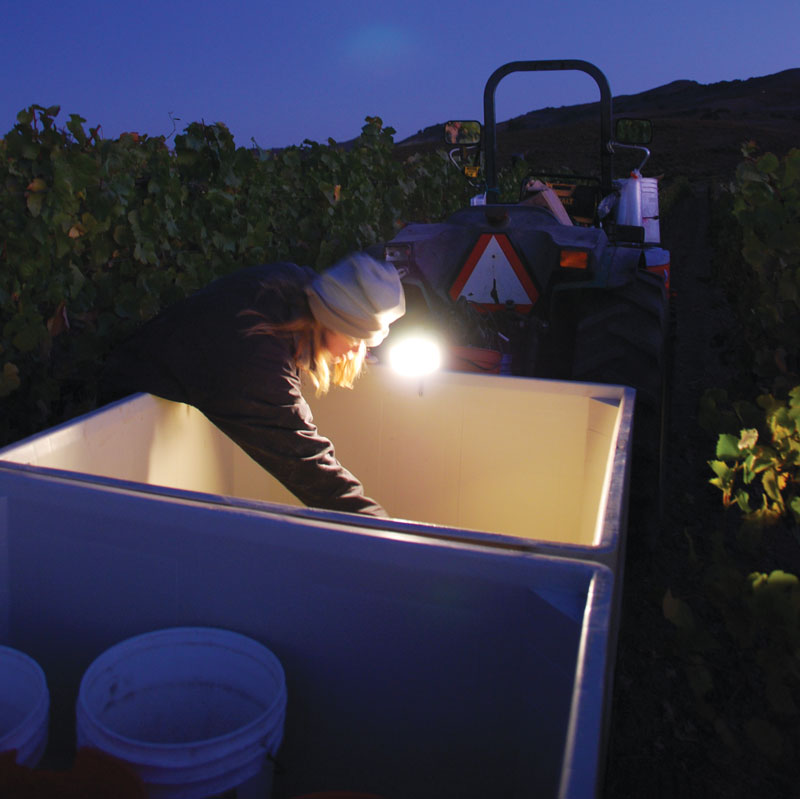
While night harvests may be a common practice in many warmer climates such as California and Australia, it’s making strides into more traditional, Old World wine regions such as Bordeaux, France. The warmer climate is pushing acid levels lower in grapes and forces viticulturalists to harvest grapes earlier and earlier, during warmer harvest dates. The push towards nighttime harvests allows time for the grapes to cool off some from the daytime heat and acid levels to creep back up. This also means less dry ice and refrigeration requirements for the incoming grapes. This has already become standard practice for the white and rosé wines in the region and is finding its way into the red grape harvest as well. phys.org/news/2023-09-climate-bordeaux-winemakers-harvest-night.html
Traditional and Charmat Methods Produce the Same Wine
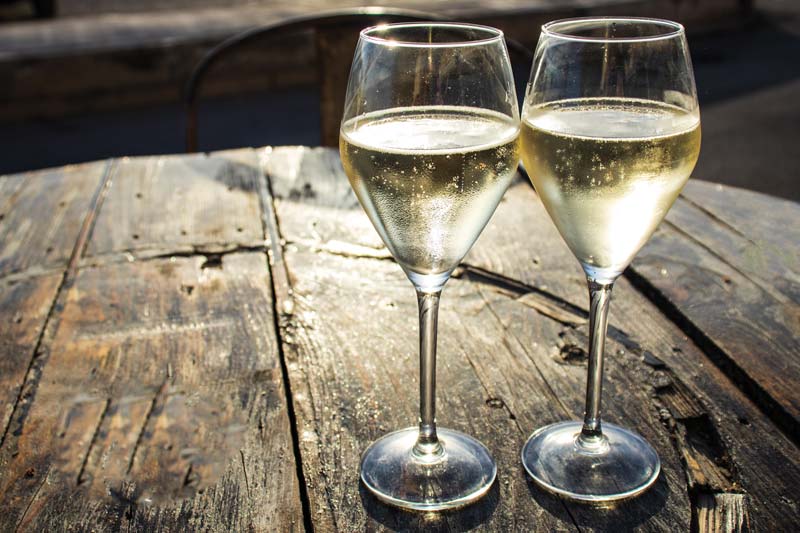
For sparkling winemakers there has long been an argument of what method produces superior wines; with traditional sparkling winemakers often trying to hold the upper hand over the charmat method. New findings concluded that neither produce a superior wine. It boils down to an age-old argument that bulk production sparkling is inferior in quality to small-bottle, traditional ways.
A new study out of the University of Rio Grande in Brazil pitted the two techniques in a head-to-head competition for dominance in terms of quality. Both were aged on lees and produced a product that displayed the same qualities and aging potential. To a small degree it confirms that aging volume doesn’t denote quality of finished wine. The study did find through physico-chemical tests that the levels of diethyl succinate (fresh apple aroma) were higher in the traditional method, but it was not distinguishable enough to cause a discrepancy in sensory tests . . . and that level did diminish in time. https://oeno-one.eu/article/view/7313



